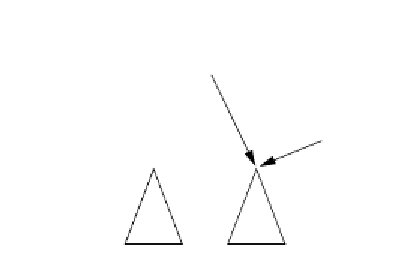Java Reference
In-Depth Information
figure 18.15
Aliasing problems in
the
merge
operation;
t1
is also the current
object.
root
t1.root
x
old
old
root
t1.root
t2.root
The third case must be disallowed because it would place all the nodes
that are in tree
t3
in two places in
t1
. However, if
t3
represents an empty tree,
the third case should be allowed. All in all, we got a lot more than we bar-
gained for. The resulting code is shown in Figure 18.16. What used to be a
one-line routine has gotten quite large.
If an input tree is
aliased to the out-
put tree, we must
avoid having the
resultant
root
ref-
erence being set to
null
.
1
/**
2
* Merge routine for BinaryTree class.
3
* Forms a new tree from rootItem, t1 and t2.
4
* Does not allow t1 and t2 to be the same.
5
* Correctly handles other aliasing conditions.
6
*/
7
public void merge( AnyType rootItem,
8
BinaryTree<AnyType> t1, BinaryTree<AnyType> t2 )
9
{
10
if( t1.root == t2.root && t1.root != null )
11
throw new IllegalArgumentException( );
12
13
// Allocate new node
14
root = new BinaryNode<AnyType>( rootItem, t1.root, t2.root );
15
16
// Ensure that every node is in one tree
17
if( this != t1 )
18
t1.root = null;
19
if( this != t2 )
20
t2.root = null;
21
}
figure 18.16
The
merge
routine for the
BinaryTree
class







Search WWH ::

Custom Search